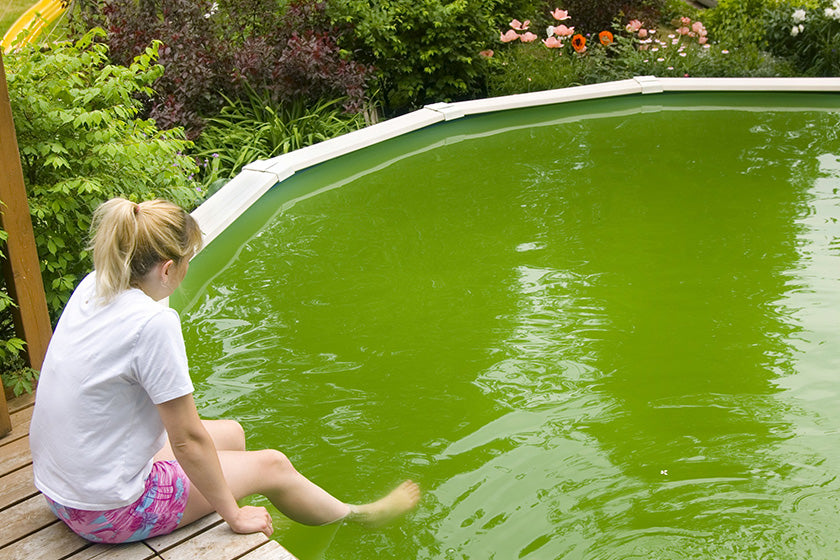
Identifying and Treating Algae in Pools
There are over 400 types of algae that can be found in water.
In general, the pool industry puts them into three major categories: green algae, yellow algae, and black algae.
- Green algae is the type you see in the water itself, it makes the water look like "pea soup". If the water is looking cloudy, chances are you are about to have problems with green algae.
- Mustard algae is very common, even in well-maintained pools. The water itself will be clear, however the algae will grow on walls - usually starting in shady areas. It brushes off fairly easily (often described as a "cloud") but usually returns quickly.
- Black algae are small spots on the walls or bottom of the pool, and can be confused with mold/mildew. In general black algae will not grow if free chlorine levels are maintained in the pool.
Preventing algae growth is much easier than treating it. Algae requires phosphorus in order to grow & thrive, so keeping phosphate and other nutrient levels low will make your pool inhospitable to algae.
Keep phosphate levels low (below 350ppb) using Orb-3 DropOut or Orb-3 PRA & Enzymes Maintenance; and use Orb-3 Pool Enzymes to prevent the formation of scum lines and other films.
Algae that form on surfaces tend to have a protective layer that makes them difficult to get in contact with sanitizer without brushing. Use Orb-3 Enzyme Cleaner to remove that protective layer, exposing them to the chemical treatments, and to help make brushing easier.
Here are some recommendations for treating algae blooms:
Green Algae
- Shock your pool with chlorine.
- Run the pool pump for up to 24-hours.
- If the pool is already green, treat with an algaecide.
- Test chlorine levels regularly and add chlorine if necessary.
- Monitor filter pressure.
- If you notice algae forming on the walls or floor of the pool, brush them to remove the algae.
Mustard Algae
- Brush pool surfaces to remove the algae.
- Shock your pool with chlorine to get chlorine levels above 5ppm.
- Treat with an algaecide.
- If the algae returns after using the algaecide, shock & brush the pool again & this time use a "copper" algaecide.
Follow the directions carefully - beware that copper is not friendly & can cause staining. A sequestering agent may help prevent staining.
Black Algae
- Use a brush to scrape the head off of the algae & expose it to the chlorine & algaecide in the water.
- Raise chlorine levels to at least 5ppm.
- Add "black algae killer" or a "copper" algaecide to the pool water.
- Run the pump for at least 24 hours.
- Test chlorine levels regularly and add chlorine if necessary.
Note: Black algae does not usually form if there is sufficient chlorine in the pool.
Follow-Up
Once the algae is under control, keep pool water and surfaces clean and maintained:
- Test and adjust chems as needed to keep pool water in balance.
- If phosphate levels over 750ppb, use Orb-3 DropOut .
- For levels between 350ppb and 750ppb, use Orb-3 PRA & Enzymes Maintenance.
- Otherwise, use Orb-3 Pool Enzymes as a stand-alone product that makes pool water easier to balance.
If you are in the market for a home with a pool, this article Is Owning a Pool Right for You? What You Should Know Before You Dive In is a helpful resource.